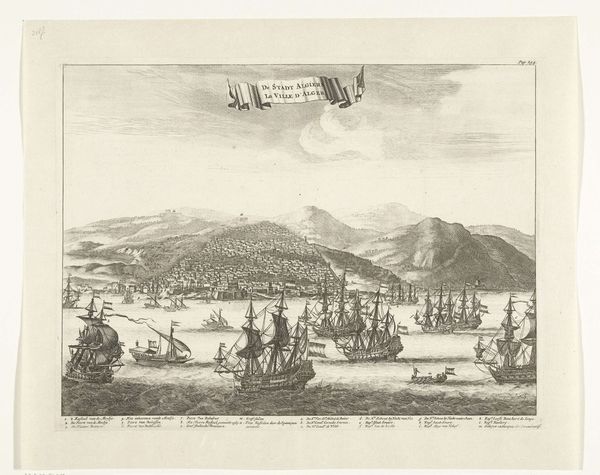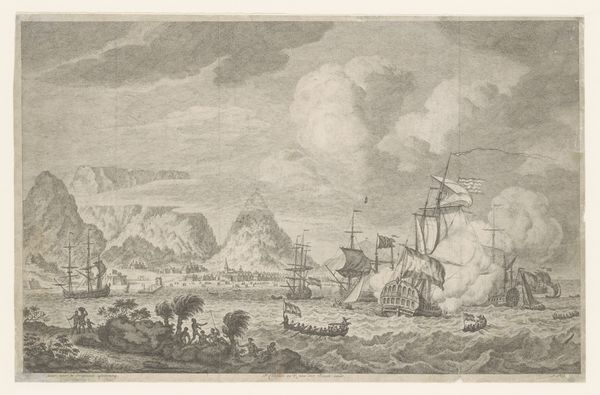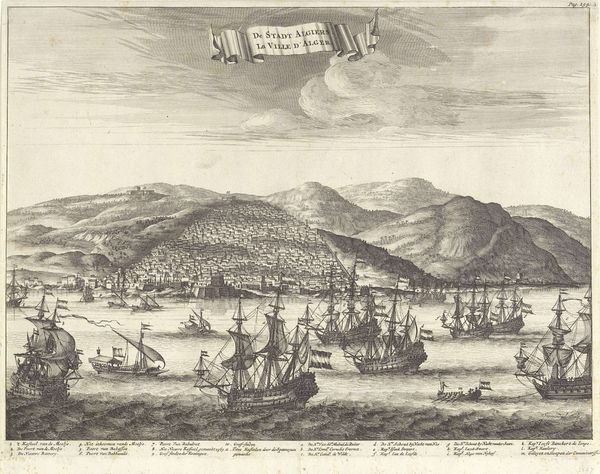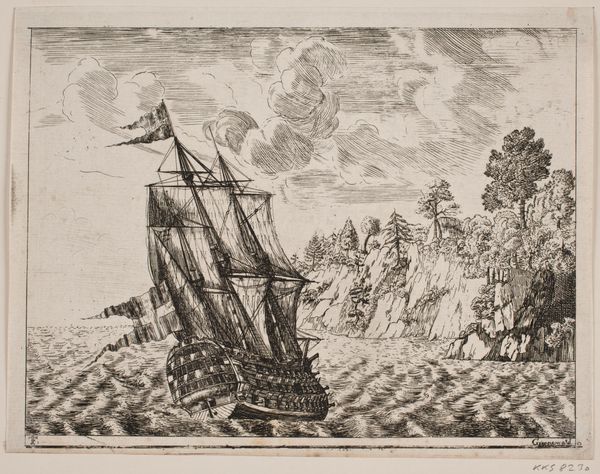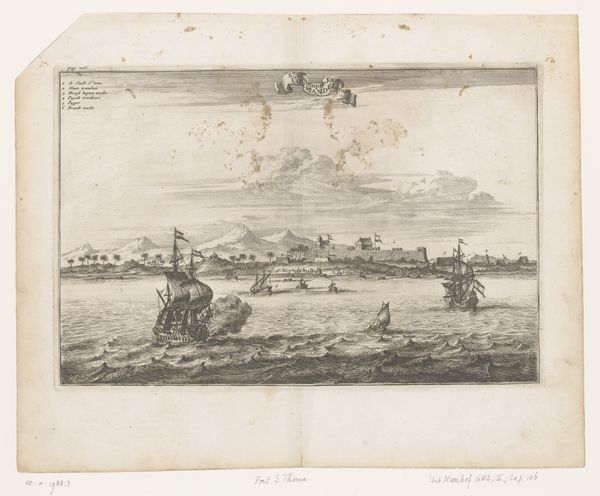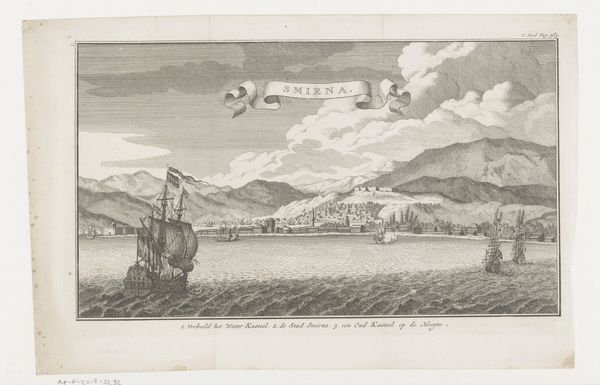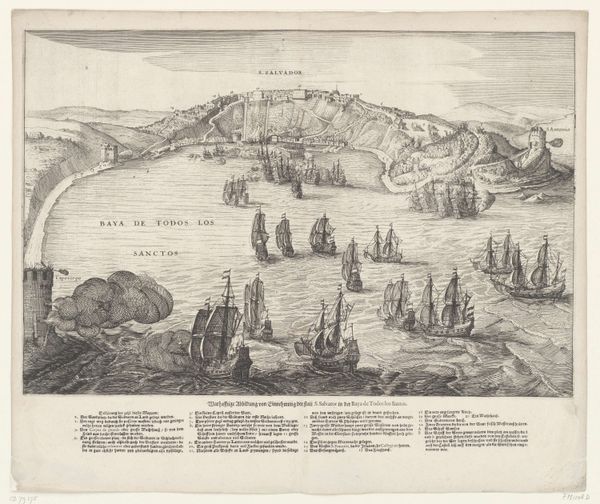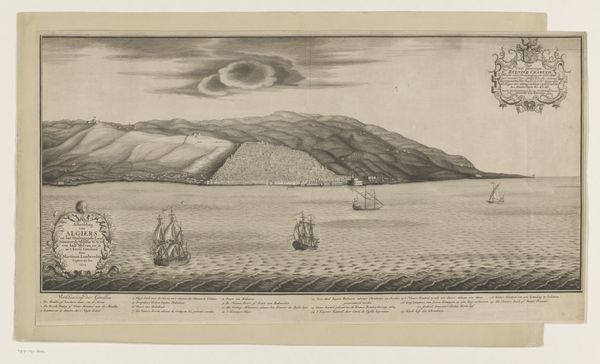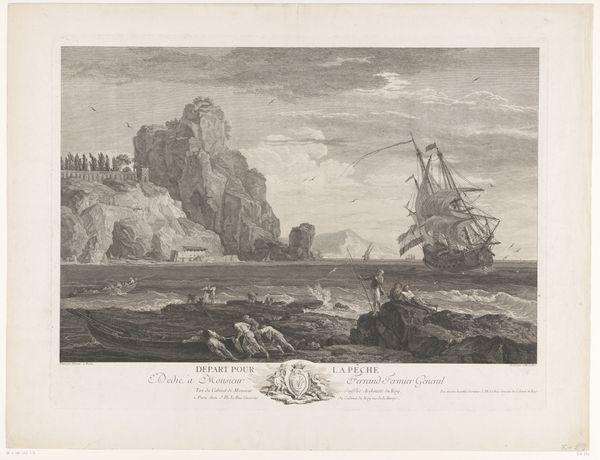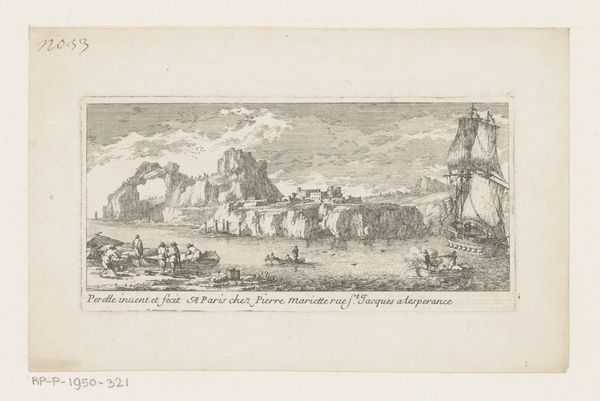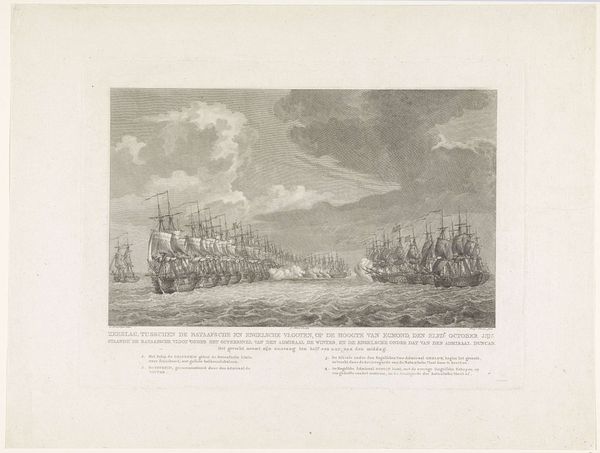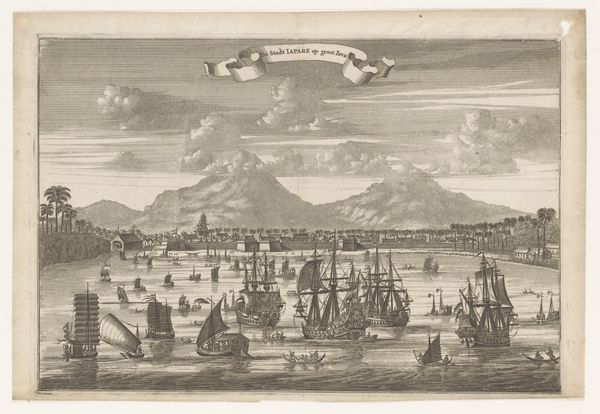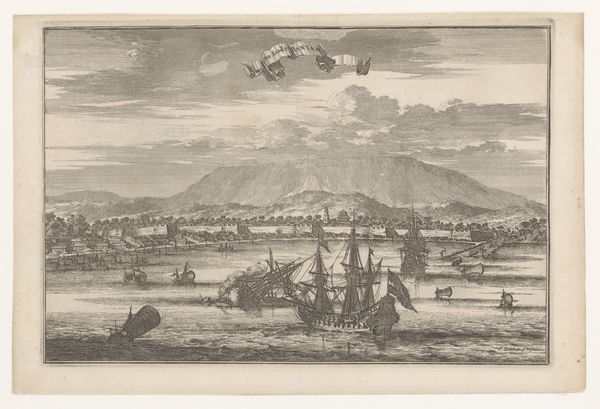
Gezicht op de Hollandse vloot onder Michiel de Ruyter voor de stad Algiers, 1662 1687
0:00
0:00
bastiaenstopendael
Rijksmuseum
print, engraving
#
dutch-golden-age
# print
#
old engraving style
#
landscape
#
cityscape
#
history-painting
#
engraving
Dimensions: height 267 mm, width 351 mm
Copyright: Rijks Museum: Open Domain
Editor: We’re looking at “Gezicht op de Hollandse vloot onder Michiel de Ruyter voor de stad Algiers, 1662,” or "View of the Dutch Fleet under Michiel de Ruyter before the City of Algiers, 1662," an engraving by Bastiaen Stopendael, created around 1687. The meticulous detail gives it a very documentary feel, but I wonder about its symbolic weight. What stands out to you? Curator: Beyond the representation of a specific historical event, consider the symbols being invoked. The Dutch fleet, presented with such sharp detail, becomes an emblem of Dutch power and mercantile reach, doesn’t it? How might those symbols play with contemporary notions of civic pride and anxieties over sea-based trade? Editor: So the ships are more than just ships – they represent Dutch national identity? Curator: Precisely. And look at Algiers in the background. Stopendael hasn’t simply depicted a city; he has shown a focal point of both allure and peril for Dutch traders. Note the detailed depiction. The banner presents the city in both Dutch and French - what message might the artist be sending? Editor: Almost like a warning and a boast combined? A demonstration of control? Curator: Possibly! The ships, and the event itself, become icons of a complex historical narrative. Each element of this work -- from the sky to the carefully-etched details of the vessels -- speaks volumes. Think about the echoes and continuities within Dutch art. How does it carry forward shared values and historical touchstones? What visual codes does Stopendael inherit and perpetuate? Editor: It’s incredible to think about all that symbolism layered into what I initially saw as just a historical snapshot. It has prompted so many interesting lines of thought. Curator: Indeed, every image is an invitation to consider the past, not as a simple record, but as a tapestry of interconnected meanings and emotions.
Comments
No comments
Be the first to comment and join the conversation on the ultimate creative platform.
